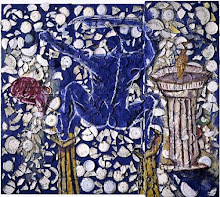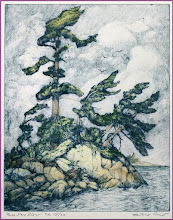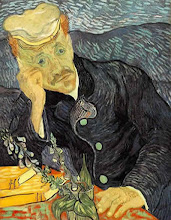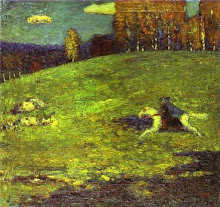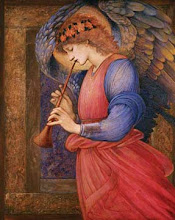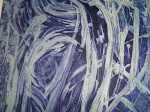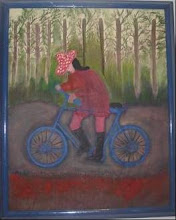My mother, who had a great sense of humor when she wasn’t suffering from depression, used to say about Unitarians: “The only time they use the word, God, is when the janitor falls down the stairs.” Mom was a fervent Christian Scientist, and she brought up my sister and me to be fervent Christian Scientists, in which endeavor she clearly failed or I wouldn’t be standing here before you this morning quoting the likes of Bob Dylan in a sermon called Tangled up in Blue.
Well, OK, she didn’t fail completely to pass on the gene for Mary Baker Eddy, the discoverer and founder of Christian Science, because I can still recite the Scientific Statement of Being, which I learned at the age of 10 in the spanking white, mock-Federal-style First Church of Christ, Scientist on Wendell Avenue in Pittsfield, which never really looked like a church to me, but more like a bank. “There is no life, truth, intelligence or substance in matter/ All is infinite mind and its infinite manifestation…” I can remember standing straight as one of those Ionic front columns as I rose in Sunday School with all the other immaculately dressed kids—the boys looking like little bankers-to-be in their three pieces suits, the girls like wedding-ready flower girls in their puffy tulle dresses—all of us well-behaved as circus dogs as we recited these big, fat, ten-dollar words.
Between you and me and the chalice, I didn’t have a clue then what the words of the Scientific Statement of Being meant and I still don’t. The phrases all circled back on themselves like the Queen of Heart’s imperious pronouncements in Alice in Wonderland or Gertrude Stein’s maddeningly tautological, “A Rose is a rose is a rose.” What did it mean to say that, “God is all in all,” or that “Spirit is immortal truth/matter is mortal error.” What, moreover, was so wrong with the material world—my pretty royal blue velvet dress with its lace collar, matched with my navy patent leather Mary Janes--that it was a mistake? And if the visible world was an illusion, where did that leave evils like slavery and the Holocaust, and what were you supposed to do about them? These were the questions with which I pestered my patient Sunday School teachers as I sat with folded hands at one of the round maple tables in the basement of the First Church of Christ, Scientist, whose robin’s egg blue walls were decorated with plaques with quotes from Science and Health and The Bible.
The most important question, which I never could have formulated, much less have been brave enough to ask was, why was Mary Baker Eddy’s God not helping my mother? Why was she spending increasing amounts of time in bed—not getting up to see my sister and me off to school, and still huddled beneath her burial mound of comforters at 3:00 in the afternoon, the shades pulled tight against the bright afternoon sun. Beside her in bed, in ravines on either side of her body, were navy-blue hard-bound copies of Science and Health with Key to the Scriptures, the Christian Science Concordance, and Robert Peel’s multi-volume biography of Mary Baker Eddy. There was the small, heavily underlined pamphlet called The Lesson, which came each week in a brown wrapper and included daily readings from The Bible and Science & Heal. There were rolled-up, rubber-banded copies of The Christian Science Monitor; under the bed were copies of The Christian Science Sentinel, which included testimonies of healing from ordinary Christian Scientists about how they had been cured of broken bones and impacted wisdom teeth, how they had prayed their way through job losses and financial reversals.
Years later, taking college courses in women’s history, I would learn that Mary Baker Eddy, thrice-married and often short of cash, had been an invalid herself. Like many smart, undereducated middle-class women in the nineteenth century, Mrs, Eddy suffered from a menu of mysterious ailments—headaches, fatigue, anxiety, hypersensitivity to noise—that would now be diagnosed as a mood disorder and treated with the latest serotonin-reuptake inhibitors like Prozac and Zoloft. But in the years after the Civil War, American medicine in general, and psychiatry in particular, was still in its infancy, and people who suffered from mental disorders were left to their own devices, becoming agoraphobic like Emily Dickinson, who was born a year after MBE, or seeking relief from the latest faddish healers—like those who peddled phrenology, mesmerism, and magnetism. Mary Baker Eddy, after studying with the famed healer Phineas Quimby, and taking to heart his central idea about the power of mind over matter, began, well past the middle of her life, to take up her bed and walk. She became a healer herself, and developed a following to rival Qimby’s. People came from all over New England to Lynn, Massachusetts to study with her; by 1886, when her contemporary Emily Dickinson had died of Bright’s disease at 55, Mary Baker Eddy had already published Science & Health, and was busy soliciting funds for the massive Mother Church in Boston. By the time Mrs. Eddy passed away at the age of 89 in 1910, she had become, according to Mark Twain, one of the most powerful women in America.
Christian Science saved Mary Baker Eddy, but it failed my mother. In the years after her divorce, she continued to read The Lesson every day, her depression and anxiety piggy-backing onto other health problems, such as high blood pressure and Type II Diabetes.
For my part, I became the archetypal angry young woman, despising all religion—not only the God of Mary Baker Eddy but also the God of the Unitarians and the Congregationalists and the Catholics and the Jews. My creed became the existentialist lyricism of Bob Dylan and the lassitudinous blues of B.B. King. It was the mid-seventies, and the country was suffering from the malaise brought on by the political betrayals of Watergate and Vietnam. A hard rain was gonna fall on all the sacred cows the older generation had worshipped—organized religion, Repbublican politics, conventional marriage, the military-industrial complex, everything was going to be destroyed and made again, in our image.
Then, a curious thing happened in my middle forties. The periods of depression and lassitude, which had begun in my teen years and dogged me all my life, began to worsen. On the surface, my life, like that of the country’s which settled down into the feel-good platitudes of Fleetwood Mac and Bill Clinton, seemed normal, if unremarkable. After losing my first husband to brain cancer, I had married again, and given birth to a much-longed for baby son. My family and I were living in northern Vermont, where my husband taught writing at Johnson State College. I had two Master’s Degrees and a modest success as a freelance writer, having written a memoir and several articles for national women’s magazines. But nothing seemed to fill the hollow in my deep heart’s core, the sense that, when all was said and done, I was lost, tangled up in blue, a driver bearing down hard on the accelerator, moving further along the highway to nowhere.
Like Mary Baker Eddy over a century before me, I searched for the key that would unlock my despair. I played hours of tennis until every muscle was bursting with lactic acid, baked apple cakes and chocolate-chip cookies for the PTA, wrote long letters to my agent with ideas for new writing projects, the enthusiasm for which I could never sustain past the first ten or twenty pages. I tried Prozac, Zoloft and Celexa, and nearly every night I self-medicated into oblivion with white wine, which my son jokingly observed should be spelled, ‘whine.’ Sometimes late at night when I couldn’t sleep, I even whispered the hocus-pocus tautologies of the Scientific Statement of Being.
Time passed; my mother moved from Florida to Virginia to New Hampshire, back to Virginia and back to New Hampshire, becoming increasingly dysfunctional with each uprooting. In 2005, she passed away at the New London Hospital in New Hampshire at the age of 80, my sister and I holding her hands as she took her last breath. One of the final bills that arrived a week after her death was from a Christian Science practitioner in Toronto, Canada. My sister paid it and sent her Mom’s obituary, which I had written and placed in newspapers in four states. The practitioner sent a kind note back:” You know you and your sister meant everything to your mom,” she wrote. It was the sort of thing people said to the bereaved, and yet we took comfort in the fact that our mother’s love for us was one of the constants in her life.
Meanwhile, my family and I moved to Massachusetts so that our son could The Hartsbrook School, a Waldorf school based on the alternative, educational principles of Rudolph Steiner, whose philosophy which places the spirit at the center of the learning process, is, in some respects, similar to the mind-over-matter creed of Mary Baker Eddy. One of my son’s friends at the new school turned out to be a Christian Scientist, and his mother was a Christian Science practitioner. It was as if fate was calling me to put all the pieces of my life into some kind of pattern, to make them make sense.
I could not bring myself to return to the First Church of Christ, Scientist, but I was hungry for some kind of spiritual connection. At the suggestion of P., my dear friend from graduate school and long-time member of UU, I joined the Society in Northampton. I came alone, as my husband contended that religion was a crutch (this didn’t really bother me, as I had said as much myself back in the day). My teenaged son preferred to sleep in on Sunday mornings. (To my great surprise and gratitude, both came to my August 2nd sermon.)
A small legacy from my mother permitted me to devote myself to writing full-time. But the depression followed me like fellow depressive Winston Churchill’s legendary Black Dog—I tied it up outside the Forbes Library in Northampton and the Jones Library in Amherst, where I worked most days, but it kept barking and yapping, demanding that I pay attention to it. Maybe I was kidding myself that I could revive my writing career, I was in my fifties now; most writers my age had several books under their belt. Instead of working, I would surf the Internet, Googling my out-of-print memoir and learning to my despair that it was going for one penny on Amazon, for one dollar on E-Bay. What if nothing came of all this time I was squandering, what if I ran through all my money, and had nothing to show for it? Maybe, in the end, I was simply a prisoner of my genetic heritage, neurochemically programmed to repeat my mother’s failures, destined to live forever tangled up in blue.
“Make a study of your depression, learn everything you can about it.” The voice belonged to my first husband, Leonard Feldstein, who had been a psychiatrist in New York, who had been dead more than twenty-five years. The words came to me during one of these long wasteful afternoons at the library. But the words were addressed not to me but to one of Len’s former patients, whom I hadn’t thought about in years, and whom I’ll call Terry.
Terry was a psychologist in her late forties, a former concert pianist who lived alone near Carnegie Hall and saw patients in the living room of her one-bedroom apartment. Terry suffered from depression, not just a sometime attack of the blues, but serious, crippling depression where she would be so distraught she couldn’t get out of bed. During her senior year at Bennington College as well as after the break-up of her marriage, she had made several suicide attempts, for which she had been hospitalized.
Terry was no longer Len’s patient—he had stopped seeing her several years before Len and I were married--but she still used to call, always at night and always in tears. Len had an answering service (this was well before the era of cell phones) so she never would interrupt our evenings directly, but the service would phone, and by the pinched features on his somber face, I would know that it was Terry, calling not just once, but several times within the last hour. Len would call her back immediately, and often he would be on the phone with her through the night, listening as she cried that her life was a mess, that there was nothing to live for, that she couldn’t go on.
Sometimes he would reassure her that whatever she was feeling was intensified by her solitude, by the lateness of the hour, by the wine she had drunk earlier. He would tell her that the despair would pass, that she herself was separate from and more than her depression. Sometimes, when her crying would subside, he would talk about his own dark periods after his own divorce, how he read the Bible. “Weeping may endure for a night,” he would quote from The Book of Psalms, “But Joy cometh in the morning.” When Terry, a lapsed Catholic, said she couldn’t abide anything having to do with scripture, Len talked about the existentialist writer Samuel Beckett, and quoted from him: “I can’t go on. I won’t go on. I’ll go on.”
Len reminded her that all the great artists had suffered from depression—Goya, Van Gogh, Picasso, Rilke, Eliot, Yeats, that no sensitive person could be immune from the atonal music of hopelessness and helplessness, the sense that one was utterly alone, the world a “booming, buzzing confusion.” He urged Terry to think of her condition not as a burden but as a gift, one that she could use in her own therapeutic practice to help others.
“Make a study of what you are feeling,” Len would repeat when Terry was finally calm enough to hang up the phone, “draw it, paint it, write about it, learn everything you can about it.”
Then, in a Eureka moment reminiscent of Archimedes in the bathtub, right there in the Forbes Library among various loafers and idlers playing computer games and staring at Internet porn, it occurred to me make a study of blue—blue, which was, in fact, my favorite color, and the favorite color of most people in the world, I would learn, blue, blue which was a synonym for depression.
“The test of a first-rate intelligence,” F. Scott Fitzgerald once wrote, “is the ability to hold two opposing ideas in the mind and still retain the ability to function.” What I began to discover about blue was that contradiction and duality were at its very core. The Russian painter Vassily Kandinsky called blue the “most spiritual of all colors,” and yet it was also emblematic of a mood disorder that affected millions. It was the color of the sky, which Emily Dickinson termed the “inns of molten blue,” it was the color of her paradisal “blue peninsula” yet it was also the shade of the blue-bottle fly that was the very last thing one glimpsed before death. Color theorists contend that blue expresses dominance and power, and blue was indeed the color of Roger Federer’s shirt when he won the French Open for the very first time this year. At the same time, code blue was also the hospital’s alert for a patient going into cardiac arrest; blue was the color of the flesh turned before it turned gray.
Navy Blue was the color of the uniform of the Union’s soldier’s during the Civil War, just a shade darker than the blue-gray of the Confederate soldier, and the blues were the name of the music that African-Americans invented after the war was over, when African-Americans discovered that even though they had won their freedom as well as the right to vote, they were still second-class citizens, not fit to live in the same neighborhoods as whites or attend the same schools or sit in the same sections of the bus or even drink from the same water fountain as whites. Blue was the color of all the states that voted for Barack Obama in the 2008 presidential election, and blue was the color of President Obama’s suit when he was inaugurated President of the United States.
So what does all this have to do with the god of the Unitarians?
I would like to conclude with another story.
Depressed people tend not to notice details; for us, the season is always deep winter; the hour groggily post-prandial. We don’t “see a world in a grain of sand,” as William Blake rhapsodized, but simply sand, about which—whether it contains mica or feldspar or bits of broken shells--we are incurious. Which brings me to confess something I noticed several months ago as I walked into this very red brick Greek Revival Unitarian Church. I had just removed my bike helmet (when the weather is good, I ride my ten-speed to the services, which reduces my carbon footprint) and was hurrying up the stone steps when, perhaps because it was spring or maybe because I was uncharacteristically early, I looked up. Then I saw what I had never noticed before: The big double front doors are blue, each paneled door topped with a square window of leaded glass divided into eight, fan-like triangular sections. The blue is a lovely azure color, Virgin Mary blue, Saint-Denis Blue, Chartres Blue, the blue that for centuries, from the late Middle Ages, the Renaissance, the Reformation and beyond, has been one of God’s favorite colors.
I have been going to the UU services for over a year; I have sipped coffee in the parlor and praised the organist and shaken the hand of the interim minister and used the transgender bathroom in the basement; I have belted out my favorite African-American hymn, “This Little Light of Mine,” with the other congregants, spaced out during readings of Frog and Toad for the children before they leave for their RE classes, brought visiting guests and friends to the services; I even have my own name tag, which hangs on a ribbon in the entryway, which I sometimes remember to pin to my jacket…I have faithfully performed all these things, but I have never noticed that the front doors are blue.
Introducing Frida von Zweig
3 years ago
